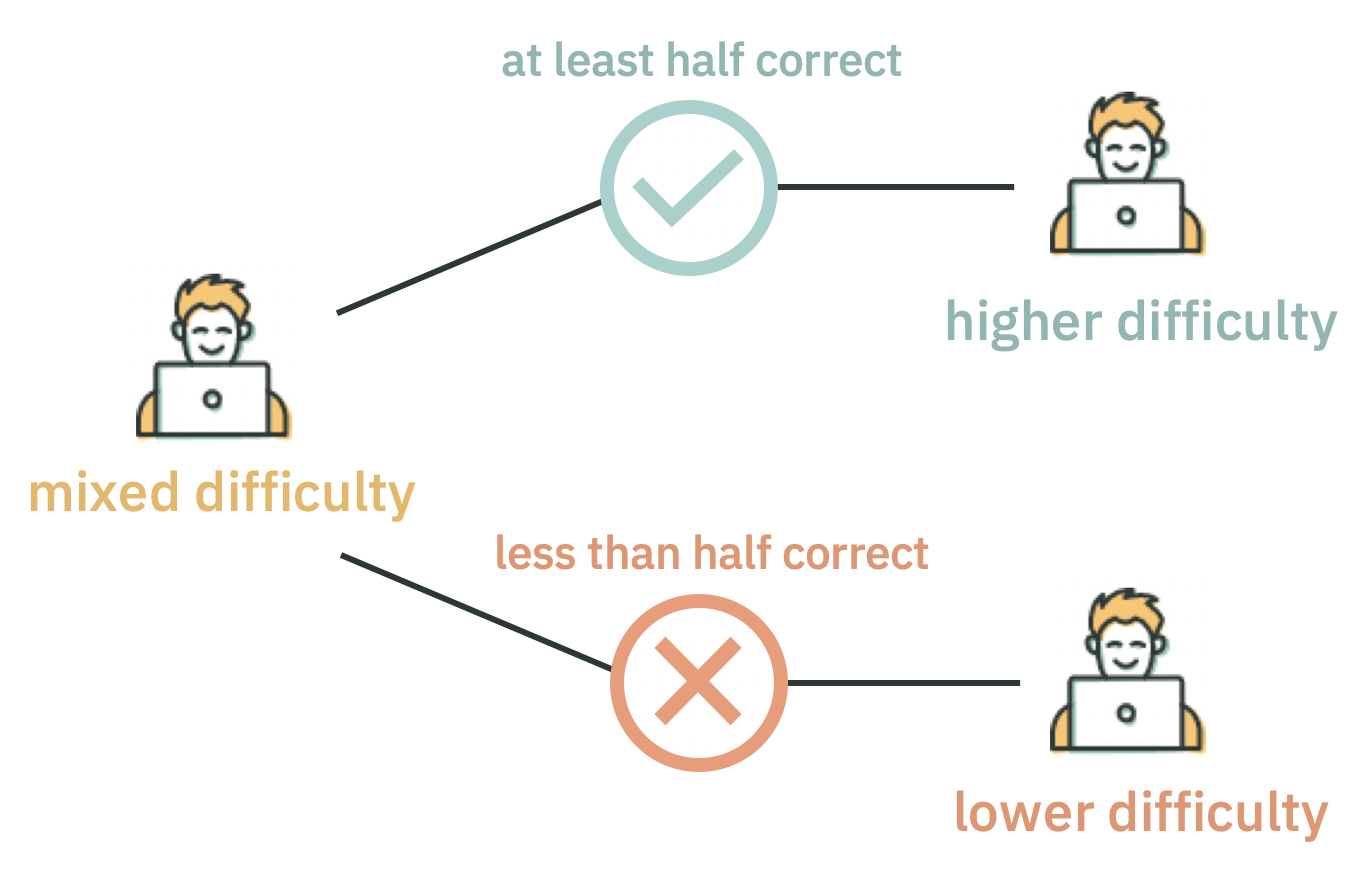The SAT made big news in the the testing world when it went fully digital in 2024. While some things stayed the same—the exam still tests Verbal and Math skills, and the total score is still 1600—much has changed. The SAT is now digital, adaptive, and a full hour shorter.
In this series of posts, we’ll answer your biggest questions about the SAT. For a video version of this post, click below.
What is adaptive testing?
Adaptive tests analyze a student’s performance and respond in real time, calibrating to each student’s skill level in order to zero in on their score more quickly. If a student is doing well on an adaptive test, the test responds by giving them harder questions that are worth more points. On the other hand, if a student answers enough questions incorrectly, the test will give them easier questions that are worth fewer points.
Adaptive testing itself isn’t new. Some tests, like the GMAT, are adaptive by question, making adjustments throughout: every time a student answers a question, the next question changes based on whether the student answered the previous question correctly.
Other tests, like the GRE, calibrate themselves differently, starting with a section of moderate or mixed difficulty, and based on the student’s performance there, they’re given a second section of harder, medium or easier difficulty.
How does adaptive testing work on the SAT?
The SAT is now more similar to that second scenario, with two sections—the first, a combined Reading & Writing; the second, Math—each split into two sets of questions, called modules. Each section’s first module will include a mix of easy, medium, and hard questions. How the student does on these questions will determine the difficulty level of the second module in that section.

The student’s performance on the first module will also lock their score for that section into a certain range. Here are some scoring ranges we’ve estimated from the released exams.

For example, if a student has a strong performance on the first math module, they might have the opportunity to score within the 440-800 range on that section as a whole, whereas if they don’t answer enough questions correctly on the first module, it might not be possible to make up enough ground on the second to break 600.
Why did the SAT change?
The new test is a full hour shorter—down from 3 hours to 2—yet is still an accurate measure of a student’s skill level.
For some students, especially those with limited test-taking endurance, the shorter test is a much more attractive option than the ACT, which is still more than 3 hours long for students who choose to complete the optional Science section.
Is the test still fair?
The College Board claims that the digital version of the test is just as effective a measure of a student’s abilities as the old paper-based exam. As test prep experts, we believe them.
The way the College Board approached the adaptive element of the exam—with an algorithm that accounts for question type and difficulty, utilizing testing data from the more than 35,000 students who participated in pilot test dates—makes us optimistic that the scores students receive on the new digital test are comparable to what they would have scored on the old paper test.
One worry we tend to hear about adaptive tests like this is that if a student bombs the first question set, they can recover somewhat but can’t totally recover. But that could have been the case on the paper exam as well; if a student really struggled with the paper test’s first Math section, they might not be able to make up for it on the next section. So the adaptive model shouldn't cause undue stress or cause students to focus too much on trying to guess which question set they got for the second module and what scoring range they’re in. We want students to focus on one question, one step at a time.
Is the adaptive test right for my student?
Students who tend to start tests strong should benefit from the adaptive nature of the SAT. They will be rewarded by a strong performance on that first module and a higher score overall.
Students with test-taking anxiety or who need time to warm up and find their groove could have a harder time with an adaptive test. However, the new test gives students additional time to answer each question, which should help alleviate some of the pressure they experience on test day and provide them with some wiggle room to settle in.
Either way, adaptive testing impacts students’ test-taking strategy because it’s a new kind of test for most high schoolers. ArborBridge’s tutoring team has a ton of experience in this area, and we are here to prepare students to adjust their approach.
Need more individualized advice?
The recommendations above are general suggestions. If you have specific questions, reach out to our experts here. We’re happy to help in any way we can.
About ArborBridge
ArborBridge is the global leader in innovative, digital, one-on-one tutoring. With nearly a decade of experience teaching students online, ArborBridge supports students of all kinds: home schoolers, AP students, test preppers, and more. Our tutors specialize in creating personalized plans and in providing compassionate support for students and families.







